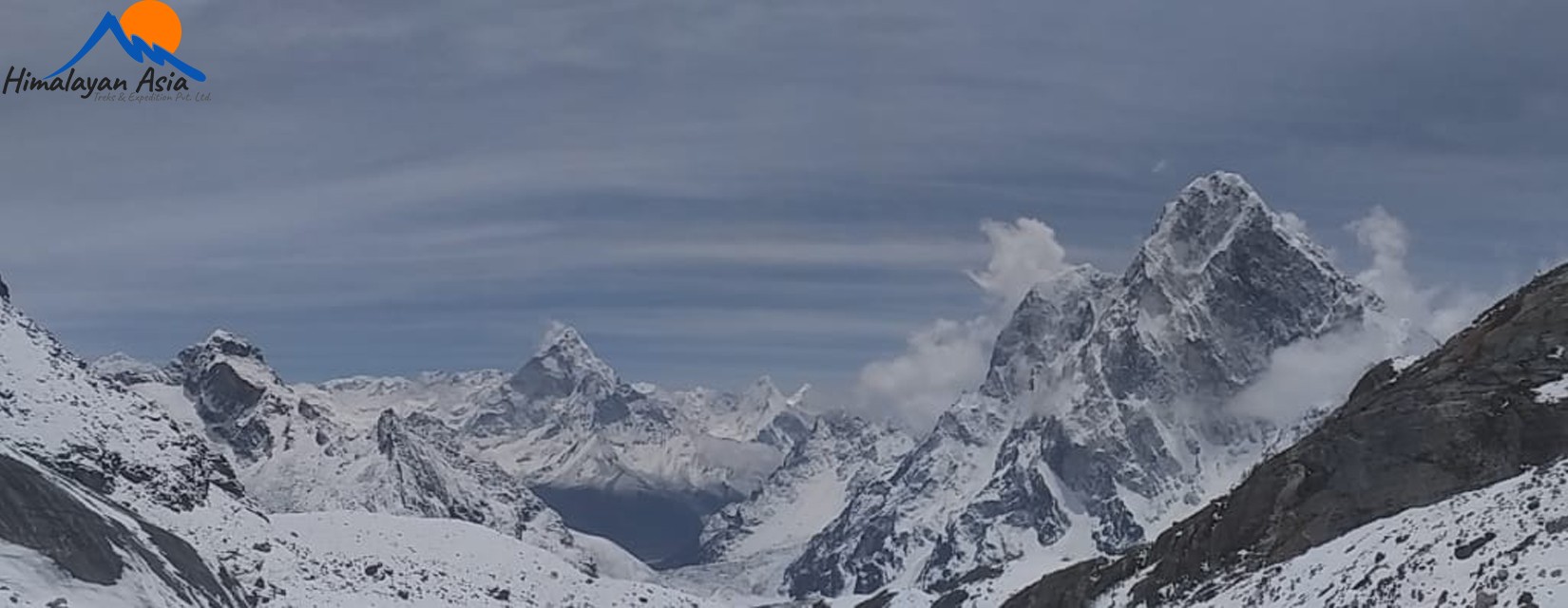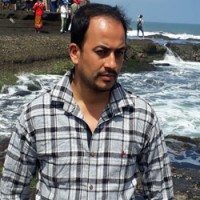About Everest High Pass Trek | Three Passes Trek in Everest 2026
Conquer the Ultimate High-Altitude Trekking Adventure in the Himalayas
The Everest High Pass Trek, also known as the Everest Three Passes Trek, is the ultimate challenge for trekkers who dream of going beyond ordinary trails and truly immersing themselves in the high Himalayas. Designed for experienced hikers and adventure enthusiasts, this legendary trek takes you across three dramatic mountain passes—Kongma La Pass (5,535m), Cho La Pass (5,420m), and Renjo La Pass (5,360m)—each offering jaw-dropping views of the world’s highest peaks.
From the towering summit of Mount Everest to the majestic faces of Lhotse, Makalu, and Cho Oyu, this trek delivers nonstop mountain scenery, remote wilderness, and a deep connection to Sherpa culture. By combining the classic Everest Base Camp trek, the tranquil Gokyo Lakes, and less-traveled alpine routes, the Everest High Pass Trek stands out as the most complete trekking experience in Nepal’s Everest region.
Operated by Himalayan Asia Treks, this adventure is carefully designed with expert local guides, proper acclimatization days, and a strong focus on safety—ensuring a well-organized and unforgettable journey for trekkers ready to push their limits.
Overview of the Everest High Pass Trek
The Everest High Pass Trek in Nepal is widely regarded as one of the most challenging and rewarding trekking routes in the Khumbu region. Unlike standard itineraries, this trek links multiple valleys and high passes, offering unmatched variety in landscapes and perspectives of the Himalayas.
Crossing three high mountain passes above 5,000 meters, trekkers are rewarded with sweeping panoramas of snow-covered peaks, massive glaciers, and pristine alpine lakes. The journey passes through iconic Sherpa villages such as Namche Bazaar, Dingboche, Lobuche, and Gokyo, where centuries-old monasteries and traditional lifestyles provide rich cultural insight.
This trek is not just about physical endurance—it’s about experiencing the full grandeur of the Everest region. For those seeking the best high-pass trekking route in Nepal, the Everest Three Passes Trek is the ultimate achievement.
What Is the Everest High Pass (Three Passes) Trek?
The Everest High Pass Trek is an extended and more adventurous alternative to the classic Everest Base Camp trek. While it includes major highlights like Everest Base Camp, Kala Patthar, and the stunning Gokyo Lakes, it goes much further by crossing three demanding mountain passes that connect remote valleys of the Khumbu region.
This trek typically lasts 18–21 days, reaching altitudes above 5,500 meters, and requires excellent fitness, strong determination, and proper acclimatization. Trekkers venture into wild, less-crowded terrain while still enjoying teahouse accommodation and warm Sherpa hospitality.
With Himalayan Asia Treks, trekkers benefit from experienced high-altitude guides, flexible itineraries, and expert planning—making this demanding journey both safe and deeply rewarding.
Why Choose the Three Passes Trek in Everest?
Choosing the Three Passes Trek in Everest means choosing the most comprehensive trekking adventure the region has to offer. This trek is perfect for those who want more than just a single destination—it’s a journey through diverse landscapes, cultures, and elevations.
Key Reasons to Choose This Trek:
- Cross three iconic high mountain passes in one trek
- Enjoy fewer crowds on remote alpine routes
- Experience Sherpa culture, monasteries, and traditional villages
- Witness turquoise Gokyo Lakes and massive glaciers
- Get close-up views of Everest, Lhotse, Makalu, and Cho Oyu
- Achieve one of the most challenging treks in Nepal
With professional guidance, well-paced acclimatization, and personalized service, Himalayan Asia Treks ensures that your Everest High Pass Trek is not only challenging—but safe, memorable, and deeply fulfilling.
Best Seasons for Everest High Pass Trek
🌸 Spring Season (March to May)
Spring is one of the best times to trek the Everest High Pass route. As temperatures rise, the trails come alive with blooming rhododendrons at lower elevations, while the high peaks shine under clear skies. Daytime temperatures are moderate, visibility is excellent, and longer daylight hours make high-pass crossings more comfortable. This season is ideal for trekkers who enjoy colorful landscapes and stable trekking conditions.
🍂 Autumn Season (September to November)
Autumn is considered the best overall season for the Everest Three Passes Trek. After the monsoon, the air is crisp, the skies are crystal clear, and mountain views are at their sharpest. Trails are dry, weather conditions are stable, and the trekking experience is at its peak. Due to ideal conditions, this is also the most popular trekking season in the Everest region.
Weather Conditions & Seasonal Trekking Tips for Everest High Pass Trek
Understanding weather patterns is crucial when planning the Everest High Pass Trek (Three Passes Trek), as the route crosses three demanding passes above 5,000 meters. Choosing the right season ensures safer trekking, better views, and a more enjoyable Himalayan experience.
Everest High Pass Trek Weather Overview
- Daytime Temperatures: During the prime trekking seasons of spring (March–May) and autumn (September–November), daytime temperatures at higher elevations typically range between 5°C and 15°C. Lower valleys remain pleasantly warm, while alpine areas stay cool and crisp—ideal for long trekking days.
- Night Temperatures: Nighttime temperatures can drop below freezing, especially near Kongma La, Cho La, and Renjo La Passes. Proper insulation and warm sleeping layers are essential.
Visibility & Mountain Views:
- Autumn offers the clearest skies and sharpest mountain visibility, making it the best season for photography and panoramic Himalayan views.
- Spring provides excellent visibility as well, enhanced by blooming rhododendron forests at lower altitudes.
Snow Conditions:
- Early spring may bring snow on high passes, adding adventure but requiring caution.
- Autumn generally has less snow, making pass crossings more stable and predictable.
Seasonal Trekking Tips for Three Passes Trek
- Always pack layered clothing, including down jackets, gloves, and thermal wear—even during peak trekking months
- Schedule extra acclimatization days, as the Everest High Pass Trek involves repeated altitude gains above 5,000 meters
- Trek with experienced guides who understand glacier travel, weather patterns, and high-pass safety
- Avoid winter (December–February) due to heavy snowfall and closed passes
- Avoid monsoon season (June–August) because of rain, landslides, and poor visibility
Essential Information for Everest Region Treks
Trekking in the Everest region of Nepal is a once-in-a-lifetime adventure, but it requires careful planning, official permits, and altitude awareness. Below is everything trekkers need to know before starting their journey with Himalayan Asia Treks.
Required Permits for Everest High Pass Trek
All trekkers must carry valid permits to enter the Everest region:
- TIMS Card (Trekkers’ Information Management System): This permit records trekker details and itineraries, ensuring safety and support in case of emergencies.
- Sagarmatha National Park Entry Permit: Mandatory for entering the Everest region, this permit supports conservation of the UNESCO World Heritage Site, home to Mount Everest, rare wildlife, and centuries-old Sherpa culture.
Himalayan Asia Treks arranges all permits in advance, so you can focus entirely on the adventure.
Safety & Altitude Sickness Awareness
The Everest High Pass Trek reaches extreme altitudes where proper acclimatization is critical. Altitude sickness (AMS) can affect trekkers above 2,500 meters, regardless of fitness level.
Key Altitude Safety Tips:
- Ascend gradually and follow acclimatization schedules
- Drink plenty of fluids and maintain a balanced diet
- Avoid alcohol and smoking at high altitude
- Walk at a steady pace and listen to your body
- Common symptoms include headache, dizziness, nausea, and fatigue. Himalayan Asia Treks’ guides are trained in altitude awareness, first aid, and emergency response, ensuring maximum safety throughout the trek.
Trek the Everest High Passes with Confidence
With the right season, official permits, expert guides, and proper acclimatization, the Three Passes Trek in Everest Region becomes one of the most rewarding high-altitude adventures in the Himalayas. Himalayan Asia Treks is dedicated to responsible trekking, guest safety, and unforgettable mountain experiences.
Everest High Pass Trek | Three Passes Trek in Everest Region 2026 – FAQ
The Everest High Pass Trek, also known as the Three Passes Trek, is one of Nepal’s most challenging and scenic trekking routes. Crossing Kongma La, Cho La, and Renjo La, this trek offers unmatched views of Mount Everest, Lhotse, Makalu, Ama Dablam, and remote Sherpa villages—far beyond the classic Everest Base Camp trail.
1. What is the Everest High Pass Trek (Three Passes Trek)?
The Everest High Pass Trek is an advanced trekking route in the Everest region that crosses three high-altitude passes above 5,000 meters. It combines adventure, culture, and dramatic Himalayan landscapes, making it ideal for experienced trekkers.
2. How long is the Three Passes Trek?
The trek usually takes 18–21 days, covering approximately 130–140 km, depending on acclimatization days and trekking pace. It starts and ends in Lukla, with optional helicopter returns.
3. What is the best time for Everest High Pass Trek?
The best seasons are:
- Spring (March–May)
- Autumn (September–November) These months offer stable weather, clear skies, and excellent mountain views.
4. What is the highest altitude on the trek?
The highest point is Kongma La Pass (5,535 meters). Proper acclimatization is essential for safety.
5. How difficult is the Three Passes Trek?
This is a challenging trek, suitable for physically fit and experienced trekkers. Expect long walking days (6–8 hours), steep ascents, glacier crossings, and rugged terrain.
6. What permits are required for Everest High Pass Trek?
Trekkers need:
- TIMS Card
- Sagarmatha National Park Entry Permit
7. What accommodation is available on the trek?
Accommodation is primarily teahouse lodges in villages like Namche Bazaar, Dingboche, Lobuche, and Gokyo. Facilities are basic but comfortable, with hot meals and limited Wi-Fi.
8. What is the cost of the Three Passes Trek in 2026?
Costs vary based on group size and services. Himalayan Asia Treks offers all-inclusive packages covering permits, guide, porter, accommodation, and meals.
9. Is the Everest High Pass Trek safe?
Yes, when done responsibly. Trekkers should:
- Be physically prepared
- Follow acclimatization plans
- Trek with experienced guides
- Use proper trekking and safety gear
10. Can beginners do the Three Passes Trek?
This trek is not recommended for beginners. Prior experience on treks like Everest Base Camp or Annapurna Base Camp is strongly advised.



